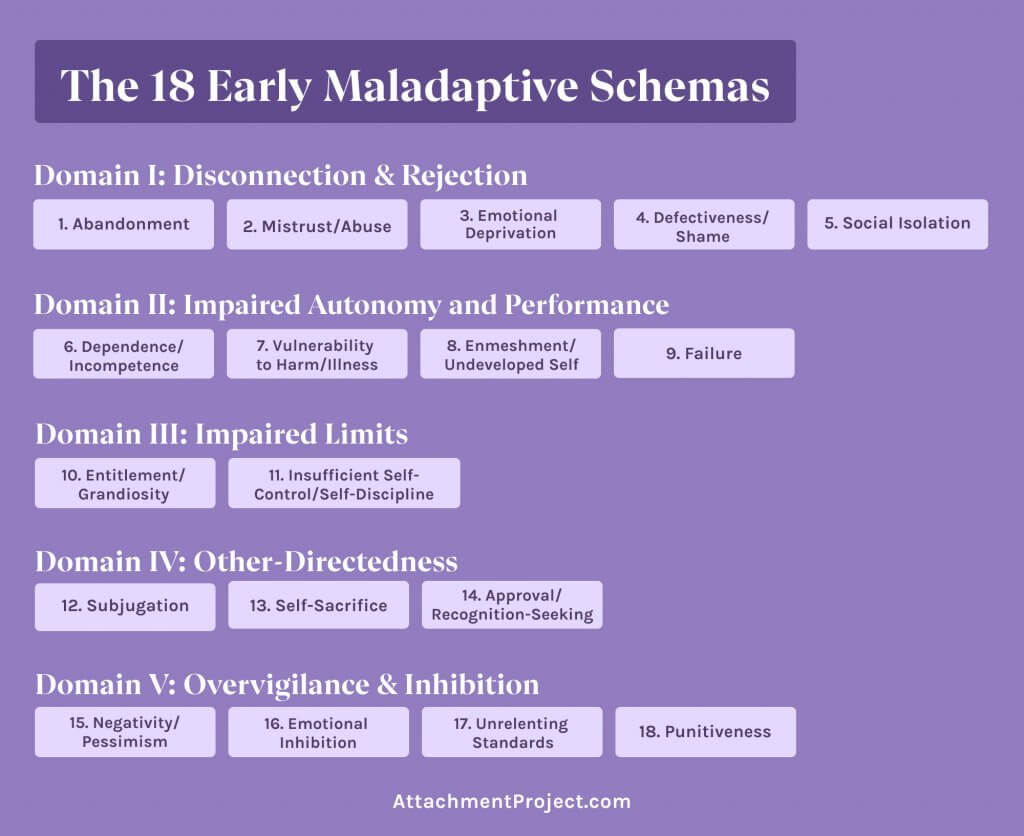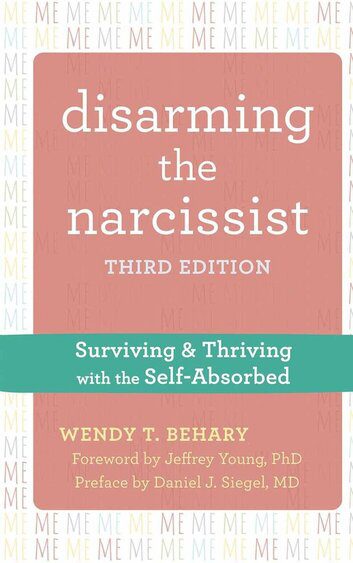In Disarming the Narcissist: Surviving and Thriving with the Self-Absorbed, psychotherapist Wendy T. Behary offers a practical tool kit that gives readers insights into how to manage the emotional challenges of relating to someone who does not relate to us: the narcissistic individual. The book is a how-to survival guide filled with useful tips informed by two branches of science: the cognitive science view of how the mind is organized around schemas, and interpersonal neurobiology.
Not easy dealing with the Narcissist
It isn’t so easy when the narcissist is your spouse, someone you’ve dedicated decades of your life to, or the parent of your children. He probably isn’t someone you’re prepared to hand your kids over to every other weekend. Nor is it so easy when she’s your boss or your eldest daughter, and you aren’t prepared to exit your job or lose contact with your grandchildren. The narcissist maybe someone you love and understand, someone who captures your heart—albeit in brief moments when his vulnerability and humanness manage to sneak out of an oversized ego to show up as warm and caring. Sadly, it’s always just a matter of time before he appears bored and disinterested.
Origin of Narcississm
The term “narcissism” hails from Greek mythology’s tale of Narcissus, who was doomed to eternally fall in love with his own reflection as punishment for refusing to accept the love of Echo, a mountain nymph. Because Narcissus craved but could never possess the image he saw reflected, he simply pined and was eventually turned into a beautiful flower. The moral of this evocative myth is that true beauty blossoms when obsessive and excessive self-love expires.
“Though they may seem well-assembled and self-assured, sometimes with a saccharine wit, they can quickly reduce you to apprehension, tears, boredom, or disgust. We call these people “narcissists.”
The Narcissist
The narcissist is masterful at compromising your emotional wisdom, leaving you filled with angst and anger—and over time these two emotional postures can be wearying. The more you understand the makeup of a narcissist, the greater your chances for emancipation from self-doubt, self-blame, and powerlessness—and the greater the opportunity to protect yourself, recapture your voice, and embrace your weary and precious self.
The narcissist both appeals and appalls. He may look like a modern-day Sir Lancelot, replete with swaggering charm and the shining armor of our time: a handsome portfolio, dazzling acquisitions. Beware! This knight is a master of illusion. He can be downright menacing. You may fall prey to his seductive lures, but his arrogance, condescension, sense of entitlement, and lack of empathy are formidable and inevitably lead to frustration and chronically difficult long-term relationships.
Sociopath vs Narcissist
Sociopaths appear to be self-righteous, and therefore, may resemble someone with a narcissistic personality, but sociopaths are typically more aggressive and devious, deriving actual pleasure from producing pain, without a sense of right versus wrong. They sometimes lack what neuroscientists might call a neuro-moral architecture in the brain.
Narcissists will indeed hurt us, but the hurt is often inflicted to protect their pride, possessions, or ego, rather than to create pain. Narcissists are self-absorbed and preoccupied with achieving the perfect image (recognition, status, or being envied). They appear to have little or no capacity for listening, caring, or understanding the needs of others, which can leave them without true intimacy, the feeling of being understood and held safely and lovingly by another person.
Empathy
Empathy is the ability and willingness to imagine walking in the other person’s shoes. Unlike sympathy, it is not simply feeling sorrow for another’s pain; it is the art of tuning in to it, allowing it to resonate within yourself. It is one of the most powerfully connective qualities of a healthy relationship, and its absence can be devastating.
History, despite its wrenching pain, cannot be unlived, but if faced with courage, need not be lived again.—Maya Angelou
Cognitive and Schema Therapy
Cognitive therapy calls for an examination of the meanings we attach to people, places, and things. It is a well-woven tapestry of concepts and strategies for correcting the biased assumptions we often connect to our negative emotional experiences and self-defeating behavior.
Schema therapy is an integrative model of psychotherapy founded by Jeffrey Young that combines proven cognitive and behavioral techniques with other widely practiced therapies.
Schemas
Young’s schema therapy proposes eighteen early maladaptive schemas that show up in adulthood as dysfunctional life themes (also called “buttons” or “life traps”). They are considered early maladaptive schemas because they derive from childhood and adolescent experiences where fundamental needs are not adequately met, which interferes with healthy and stable development. Schemas are beliefs or cognitions, involving emotional and bodily sensations, along with biological elements such as temperament.

Schemas may be dormant for much of one’s life, only becoming activated by conditions that either mimic or challenge the unyielding beliefs embodied within them. These “truths,” which are the abiding content of the schema, have long been held and are difficult to refute. They are often connected with painful childhood memories, discreetly sheltered within the brain, and are experienced as visceral, meaning they are sensed (but not always sensible). Because they emerge outside of awareness and therefore aren’t based on the present, the profound and often exaggerated resonance of schemas frequently leads to self-defeating behavior patterns.
A Schema is an emotional belief, first formed in your childhood or adolescence, that carries an exaggerated realness and intensity under certain conditions, even if it’s dormant most of the time.
Protective Masks
As a child, he sought to escape the pain with coping skills that disabled healthy interpersonal connectedness but enabled him to thrive amid the voids and ruptures. Those coping skills often involve these protective masks:
- The perfectionist: the hallmark of an unrelenting standards schema
- The avenging bully: the hallmark of an entitlement schema
- The competitive braggart: the hallmark of an approval-seeking schema
“You did the best you could as a child, but you can make new choices as an adult—not so easy when faced with the off-putting reactions of narcissists, but doable and necessary.”
Strategy for changing your relationship with the narcissist. This strategy typically involves four stages:
- Observation: You observe the specific behaviors, reactions, and interactions that characterize the relationship between you and the narcissist.
- Assessment: Your observations and insights allow you to assess the dynamics in your relationship more accurately and perhaps more dispassionately.
- Identification: Your assessment enables you to name the schemas that provoke ineffective coping responses, and to recognize self-defeating patterns in both of you.
- Differentiation: Your identification of the schemas and coping responses at play allow you to differentiate experiences driven by memory and temperament from the here-and-now moments, thus liberating an authentic, sturdy, and credible voice.
“The past informs the present, awakening the mind’s automatic mechanisms for identifying threatening conditions and steering us to safety.”
Fear of Change
Change can be an arduous and exasperating undertaking. Not everyone is ready or willing to change. Fear can be a primary obstacle, including fear of dreadful feelings embedded in our schemas, even if the goal is to assuage those feelings.
Harnessing the Force
FORCE stands for flexibility, openness, receptivity, competence, and enlightenment.
When engaged in this state of FORCE, your interactions will be more authentic and rewarding, and you can share your wisdom in a way that sheds a warm and brilliant light on darker moments. When interacting with difficult people, make use of your heightened empathy and sharpened focus to manifest the elements of the FORCE:
Flexibility:
Adjust your statements, questions, and responses to fit the situation. Resist and discard rigid and unbendable inclinations and ideas.
Openness:
Listen without judgment or expectations. Not jumping to conclusions allows discovery to occur, even while predictable patterns may still dominate.
Receptivity:
Use eye contact, facial expression, and body language, combined with your words and tone of voice, to suggest that you are ready to relate to others and invite their ideas and feelings without coercion, interruption, or censorship. Use sturdy limit-setting when the narcissist violates boundaries with verbal and disrespectful replies.
Competence:
Be a credible and empathic listener and display clarity and sensibility when communicating, along with enthusiastic and attuned listening. Be a role model of authenticity. Try not to be distracted or motivated by winning, self-righteousness, or approval-seeking from the narcissist.
Enlightenment:
Be curious. Encourage and demonstrate interest in exchanging insights. Create an atmosphere of mutual awareness and understanding through spoken and unspoken language, shining light on the darkness of ignorance and inviting the narcissist to do the same for you.
All the Best in your quest to get Better. Don’t Settle: Live with Passion.



Comments are closed.